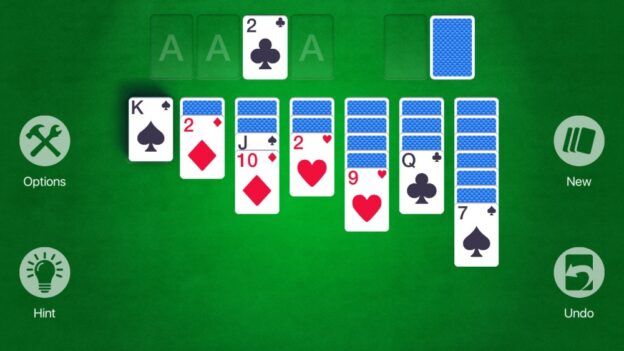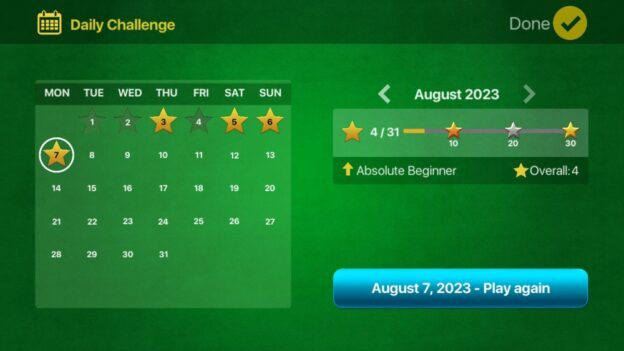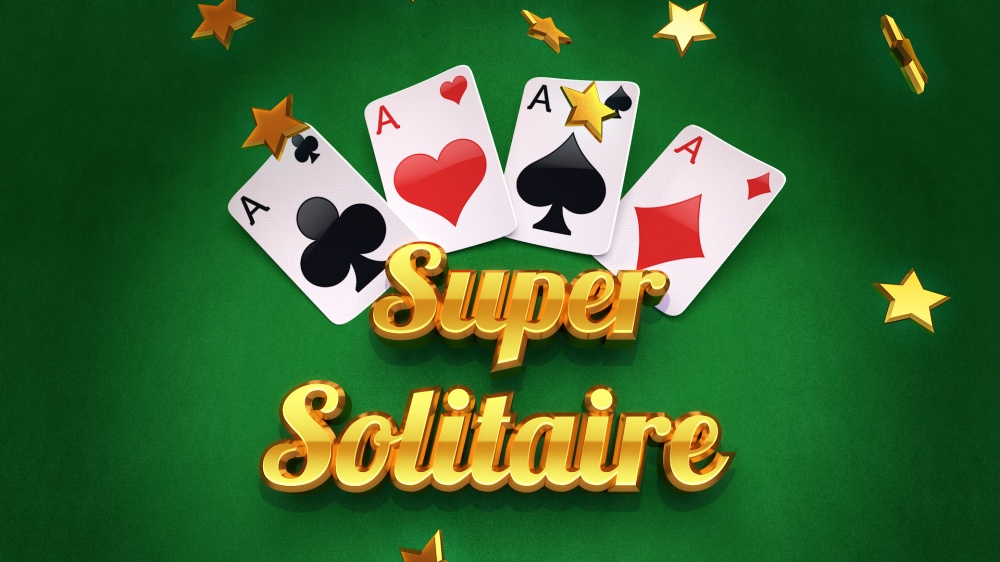Super Solitaire is dubbed as the ultimate solitaire experience for the Nintendo Switch. It takes that classic solo card game and creates a virtual experience with plenty of options. While it does manage to hit the spot, it lacks variation, making it pricey for what’s on offer.
There’s no need to explain the rules of solitaire; surely you know them? It uses a standard deck of cards dealt into seven increasingly large piles with only the top card turned over. The remaining cards are left at the top to flip through, taking any that can be added in descending order and alternating colors to those already turned over. The goal is to remove all cards from the play area, building them up by suit in ascending order.

It’s a fun game that’s been around since the 1800s (apparently – thanks, Google). I’m a bit of a solitaire nerd, having grown up with a grandfather who taught me many versions of the game. When I first launched Super Solitaire, I expected (or hoped) to see some of these on offer. I’ve played versions shaped like pyramids or clocks; there’s a simple four-card version that’s extremely fun; and then there’s the likes of Freecell and Spider Solitaire. There are many, many variations, but unfortunately Super Solitaire only sticks to one. Let’s see how the game deals with that version.
Firstly, I immediately checked if you can draw three cards at once from that leftover pile. You can! To me, this is the proper (and harder) way to play, just like my grandfather taught me as a kid. Super Solitaire allows you to switch between one and three cards, which is a nice touch.

Another good feature is a daily quest. A blank calendar awaits, unlocking a new game to beat every day. Once completed, your calendar earns a star for that day. This is a terrific incentive for replay, and adds value to an otherwise simple outing.
There’s also a mode called Beat the Devil, which is simply a harder version with three difficulty levels. This appears to be a more challenging variation of solitaire, though I’m not entirely sure what makes it harder other than where the cards might be hiding, I guess. I attempted a few sessions and was unable to win.

I’m appreciative of the amount of accessibility inclusions. You can play using the touchscreen in handheld mode; seems like a no brainer, but I’m glad it’s there. It makes playing super simple, with no fiddly controls to learn. Simply touch and drag the cards and they snap into place – I had no issues with this at all, so kudos to the developers.
Another fine feature is the left-handed mode. Whilst I’m not left handed, it’s all about accessibility and Ned Flanders would be proud to include this in his Leftorium.
The final feature in this category is a rotatable tate mode. This allows you can hold the Switch in a vertical position, like an oversized phone or a small tablet. It’s not necessarily a feature I needed, but hey – nice inclusion. And it works just fine.
So the game plays well, looks nice, and has daily incentives to return to play. But is it worth US$9.99? It’s a whopping $16.99 in Australia. Sadly, at this price it’s hard to recommend. While it is a good version of solitaire, it’s difficult to justify spending this much on the game unless you’re a super fan who needs every version. Perhaps some DLC with extra modes could sweeten the deal, but knocking a few dollars off the price would also be appealing.
Overall, Super Solitaire is good, though it lacks alternate modes and thus presents basically one simple card game at a relatively hefty price. While it does well at this one game by including engaging reasons to return for challenges, it’s essentially the same formula every time. There are plenty of alternatives on the eShop for much cheaper. Maybe they’re not as polished, but it will ultimately be up to you to decide if it’s worth it. Fans will enjoy it, but it’s more appealing on sale.
Review: Super Solitaire (Nintendo Switch)
Overall, Super Solitaire is good, though it lacks alternate modes and thus presents basically one simple card game at a relatively hefty price. While it features reasons to replay, it’s essentially the same formula every time. There are plenty of alternatives on the eShop for much cheaper. Fans will enjoy it, but it’s more appealing on sale.


